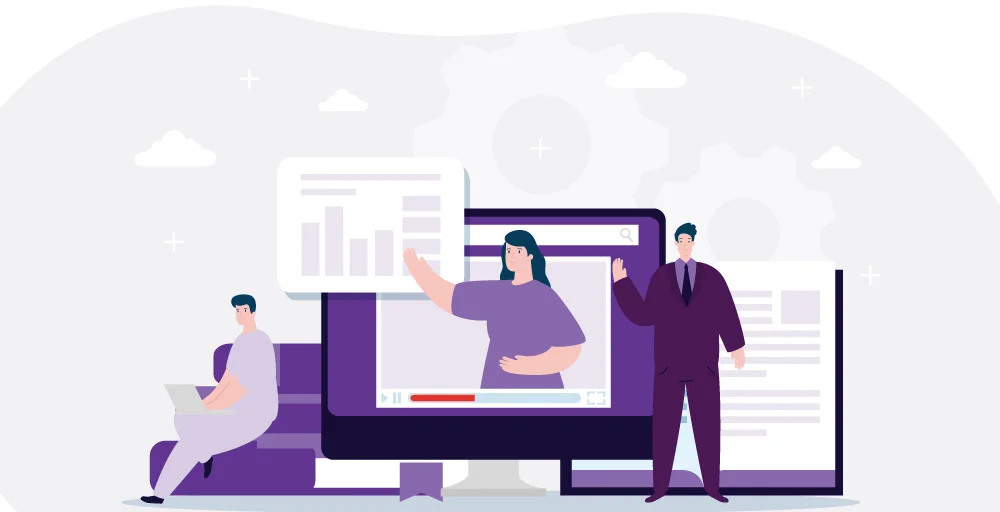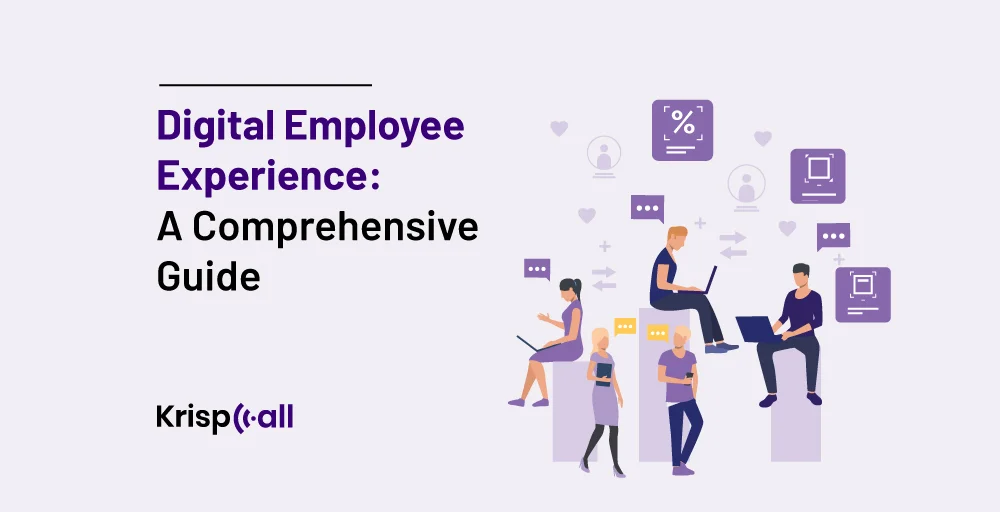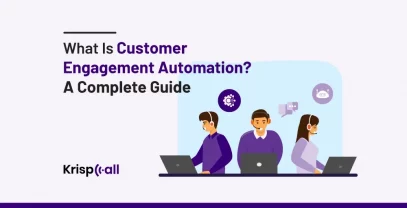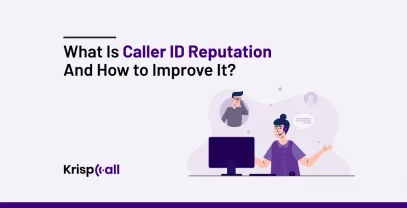Are you tired of slow, inefficient software at your job making you feel like you’re running through molasses? Do you wish you could use a better tool to collaborate with your coworkers and blow your deadlines away?
The good news is that the digital Employee Experience is your savior. DEX integrates technology to create a more natural and engaging workspace. Digital Employee Experience connects employees and improves collaboration, regardless of location or work hours.
This guide uncovers Digital Employee Experience’s benefits and top practices and shares how you can increase employee satisfaction, remain competitive, and boost productivity in the digital era.
🔑KEY HIGHLIGHTS
- Digital employee experience is about how an employee interacts with the corporate digital environment, including the hardware, software, access, and support they need to get work done daily.
- The components of the digital employee experience are user interface and user experience, technology performance, integration and interoperability, personalization and customization, and training.
- The benefits of digital employee experience include engagement and retention, productivity and performance, deflecting incidents, and learning and development.
- The critical feature areas of Digital Employee Experience include UI/UX, technology performance, integration, personalization, and support.
What Is The Digital Employee Experience (DEX)?
Digital employee experience refers to an employee’s digital interaction with the corporate digital environment, including hardware, software, access, and support needed to perform day-to-day tasks. The concept is comparable to rational companies delivering a unified customer experience.

It entails overseeing and managing all employee interactions with workplace technology to improve user experiences, productivity, and worker engagement.
Platforms like Slack, Microsoft Teams, and Zoom are some of the popular Digital Employee Experience examples that facilitate communication and file sharing and enhance employee collaboration.
Why Is The Digital Employee Experience Essential?
Digital Employee Experience is essential to organizations because of its direct impact on employee satisfaction, productivity, engagement, and overall well-being. As such, a positive DEX translates to improved employee retention rates, drives customer experience, and increases sales, profits, and share prices.
Lacking a seamless digital environment may diminish employee productivity while increasing turnover rates. This is fairly common among employees who know and use a different supplier that has better products, leading them to leave for a company that has better products and services to be used.
What Role Does Automation Play in Digital Employee Experience?
Automation is a critical tool for simplifying the digital employee experience. It saves time while also minimizing mistakes and increasing overall productivity.
Automating manual and time-consuming activities such as the onboarding process, leave applications, and performance reviews. This simply amounts to an increase in employee productivity, reduced administrative overhead, an improved employee transition process, and, in the end, an improved Digital Employee Experience.
It offers immediate and personalized assistance, increases productivity, and maintains a healthy, constant, and trustworthy IT service desk environment for a more stable and productive digital workplace.
How Does Digitization Affect Employee Experience?
The following describes how digitalization, or reinventing company operations with digital technology, influences the employee experience:
- Increased Flexibility and Remote Work: Digitalization has resulted in a move toward flexible and remote work in several organizations. Cloud-based technology and virtual workspaces have allowed employees to work from wherever and whenever. Hence, it has nurtured a sense of flexibility and balance between work and personal life.
- Personalized Learning and Skill Development: Digital transformation facilitates and enables customized learning and skill development. AI-powered learning platforms, virtual training modules, and e-learning courses allow employees to upskill and gain new competencies according to their unique schedules and in light of the changing requirements within the industry.
- Empowerment Through Digital Tools: Collaboration platforms, project management tools, and various communication apps facilitate team workflows and seamless connectivity across distances and time zones. This enhanced connectivity encourages employees to feel unity, creativity, and autonomy.
- Data-Driven Decision Making: Thanks to a huge amount of data and the possibility of analysis, employees can make decisions based on evidence. This will lead to better performance and higher productivity levels from one side, and from the other, will add to their creativity and engagement as they will feel free to implement their knowledge and ideas.
- Improved Onboarding and Training: A digital onboarding program can help new employees get to know a company better, leading to more engaged workers. Furthermore, such training can help a person be productive much quicker than traditional on-passed live training.
Digital Employee Experience Examples
Here are some examples to help you imagine how you can put them into practice:
- 100% implementation of a single sign-on, resulting in a total elimination of login to multiple sites.
- The walk-up IT help desk, virtual or in-person, responds quickly to incidents and resolves them.
- A tool for frontline feedback that allows employees to make suggestions and upvote features.
- A well-coordinated phishing protection program so that employees receive “test” phishing emails on a consistent schedule.
- The CRM is identical to a tool that users order specifically for themselves.
It does not have to be perfect on your first attempt. It is just a matter of learning the kind of experience your employees have with technology and your IT departments’ response to their break and service requests like:
- How do you launch new digital tools?
- How do you teach the employees to use technology?
- How do you work with them to know and meet their needs?
After gathering your insights, you must turn them into actions. No one size or technique fits all when it comes to creating an excellent digital employee experience. Still, your employees can tell you what works best.
Components of Digital Employee Experience
Having digital tools is not enough to create a good digital employee experience. The tools must be accessible and operate effectively to facilitate the kind of interactions with employees that build a positive DEX.
The following digital employee experience components are the key to doing so:
- User Interface (UI) and User Experience (UX): Digital Employee Experience starts with how straightforward and pleasing the workplace technology is. Digital platforms and AI productivity tools must be intuitive, functional, and visually inviting so that employees can perceive them well. Just one of these elements is not enough. An app that looks good but constantly crashes or a platform with well-organized content that is confusing to navigate will form negative DEX interactions.
- Technology Performance: How well devices connect to the internet and how well tools perform impact employee efficiency as well. Speed, reliability, and responsiveness are the foundation for user satisfaction and determine how quickly tasks get done.
- Integration and Interoperability: Most employees must use multiple digital tools or platforms to perform their jobs. The extent to which these work together seamlessly can streamline work or slow down productivity. Integration that allows automatic data transfer between tools reduces errors and means employees don’t waste time manually entering data.
- Personalization and customization: Employees have a better DEX when digital tools meet their needs and preferences. Predictive analytics and algorithms that curate personalized experiences based on an employee’s typical use of the tool reduce the effort they must put in. Choices that allow employees to tailor the look and function of their tools also improve the digital employee experience.
- Support and training: If employees don’t know how to use technology to its full potential, it won’t necessarily benefit them. Training and support must be available to help employees learn how to navigate digital tools and take advantage of everything they offer.
Benefits of Digital Employee Experience
Embracing a positive Digital Employee Experience offers a range of advantages for both employees and organizations. From heightened productivity and engagement to streamlined collaboration, the Digital Employee Experience fosters an environment where digital tools seamlessly integrate and amplify employees’ capabilities.
1. Engagement and Retention
Organizations are committed to providing the tools needed for efficient work by empowering employees through technology. Engaged employees are more likely to stay longer, contributing to reduced turnover rates. Digital tools further facilitate engagement by enabling open communication and interaction among team members, regardless of physical location.
2. Productivity and Performance
Digital tools are meant to be easy to use and consistently streamline tasks. This means less time spent on troubleshooting and enhanced overall efficiency. When employees are equipped with tools that align with their tasks and goals, they are motivated and empowered to deliver exceptional work. User-friendly interfaces and efficient workflows inspire confidence and competence, contributing to a higher quality of output and a more positive work experience.
3. Deflect Incidents and Avoid Downtime
Digital Employee Experience has the potential to deflect incidents and downtime by ensuring that employees have reliable access to the digital resources they need. Issues on an employee’s laptop often go unreported – the employee simply restarts the application or the device itself. However, those problems could be a symptom of a broader issue that needs to be addressed, such as Wi-Fi problems in a specific building.
4. Learning and Development
A strong Digital Employee Experience includes opportunities for learning and development, which enriches employees’ skill sets and keeps them engaged. Professional development programs and access to online resources provide avenues for growth, allowing employees to expand their capabilities and contribute more effectively to the organization.
5. Support for Hybrid and Remote Workers
As a hybrid, remote work, and virtual agents become more common, DEX becomes even more crucial in building and maintaining a positive work culture. The digital experience becomes synonymous with the work environment for those working outside the traditional office. A well-crafted DEX facilitates meaningful connections between team members, regardless of their physical location.
How to Create a Digital Employee Experience Strategy?
Organizations need to take note of the following steps to develop a successful digital employee experience:
- Understand Employee Needs and Expectations: Collect and analyze as much information as possible about your employees’ pain areas, digital goals, and wishes. Conduct surveys and focus groups among employee populations and listen to their feedback to ensure the DEX’s user-centered design reflects your workforce’s particular needs.
- Assess the Current Digital Landscape: Review what tools, apps, and technology are being used and how people are not adopting and using these. This part of the process must also consider integration and redundancy and should also look at what is currently not working for people and what they dislike about what they have.
- Create a Holistic DEX Strategy: This should span the entire employee lifecycle and include everything from how new staff are onboarded to how they use things in their day-to-day work and how staff are offboarded. The holistic strategy should include the technology systems, processes, and culture.
- Prioritize Automation and Personalization: Automation and Personalization should be the priority, among other aspects. Automation allows for the de-stressing of work by minimizing unnecessary efforts. However, employees also value features such as custom dashboards and suggestions based on artificial intelligence.
- Implement Employee Recognition: A novel system for employee identification, incentivization, and reporting will improve participation and organization by individual contributors.
Challenges of Prioritising Digital Employee Experience
Implementing a positive digital experience isn’t easy. Knowing the obstacles you’ll face can help you prepare for them.
The challenges associated with addressing an organization’s DEX include:
- Stakeholder buy-in: This means convincing leadership that the digital transformation is essential or feasible and forcing it through approval. This could imply selling to employees at first, who require hands-on experience with the technology to understand its potential.
- Building the right tech stack: You may need to choose and format the appropriate technology so your tools and systems can work together to offer your employees and enterprise the best end-to-end digital experience possible.
- Change management: Implementing sophistication into your workforce is sure to undergo several changes. Employees must be retrained, and workflows and business procedures must be reconfigured, all of which must be anticipated and managed.
Digital Employee Experience Best Practices
Digital employee experience best practices refer to a holistic approach to maximizing employee interaction with digital technologies in the workplace. Understanding employees’ needs can facilitate the identification of their pain points, preferences, and challenges and facilitate customizing digital solutions. Here are some of it:
- Personalized Engagement: Personalizing experiences can improve engagement and satisfaction, including custom interfaces, relatable content, and personalized training programs.
- Mobile Accessibility: Mobile accessibility is critical given the extensive use of mobile devices, which allows employees to use essential tools and information anywhere.
- Digital learning: Automation and other digital tools can streamline business process, benefiting employees while integrating the new hire faster.
- Open communication: A feedback mechanism whereby employees could air their views, give suggestions, and raise issues would promote a culture that upholds and reflects speech honesty.
- Cyber security awareness: Creating awareness about cybersecurity protection and protecting proprietary rights to ensure a safe and delegating culture.
Conclusion
Digital Employee Experience, or Digital Employee Experience, is a critical aspect of modern-day workplaces designed to ensure employees are more engaged, productive, and satisfied with their work environment. Automation and digitization are the two precepts that underpin DEX.
As the terms suggest, they are about simplifying the work environment for employees and giving them more digitized tools and flexibility to learn work from anywhere, at any time.
The critical feature areas of Digital Employee Experience include UI/UX, technology performance, integration, personalization, and support. Benefits range from engagement and retention to incident deflection and support for remote work. Developing an effective DEX strategy involves understanding employee needs and assessing the current landscape, DEX maturity, and automation preferences.
FAQs
What is DEX Solution?
Digital Employee Experience (DEX) is a VMware solution that measures workplace experience, analyzes the data, helps deliver a high-level employee experience, and helps remediate issues.
What do you mean by employee digital experience score?
A Digital Employee Experience score is a metric that quantifies the digital employee experience, thereby giving IT managers a 360-degree perspective on their companies and helping them understand and improve the experience.
How can you improve the digital employee experience?
Improving the digital employee experience entails ensuring frictionless access to applications and resources, detecting and analyzing DEX sentiment, prioritizing incident impact, accelerating resolution, and ensuring security and consistency.
What are the different types of DEX software and tools?
DEX software and tools include platforms for employee experience management, sentiment analysis, automated remediation, and integrating virtual desktops and collaboration.
What is a good digital experience?
A good digital experience is a technology-based experience that enables customers to work together digitally. A positive digital experience is a user-friendly mobile experience that facilitates collaboration, is personal, and delivers digital learning.
What types of issues obstruct the digital employee experience?
Issues like complex interfaces, lack of mobile access, inadequate collaboration tools, and insufficient training can obstruct the digital employee experience.





